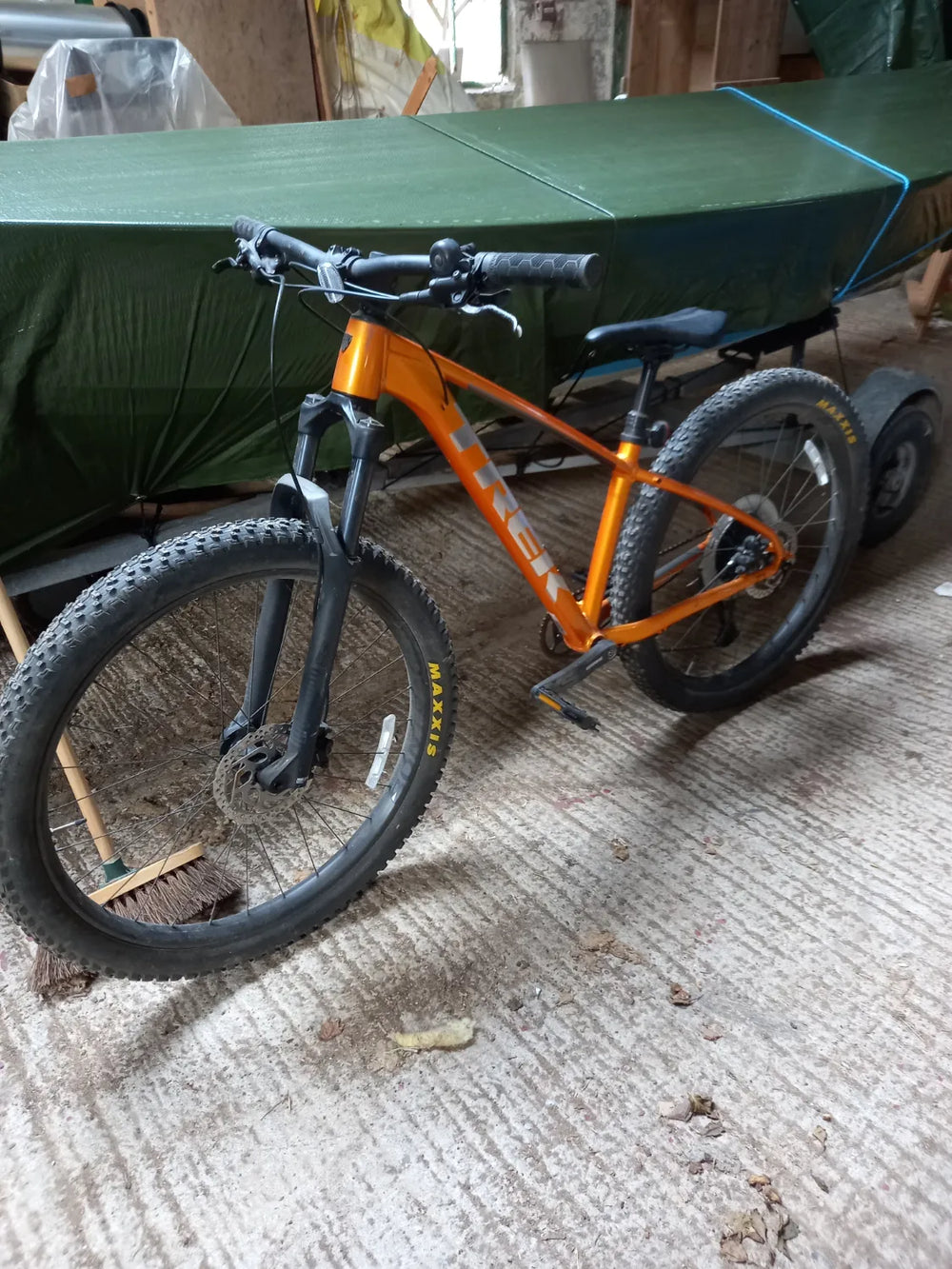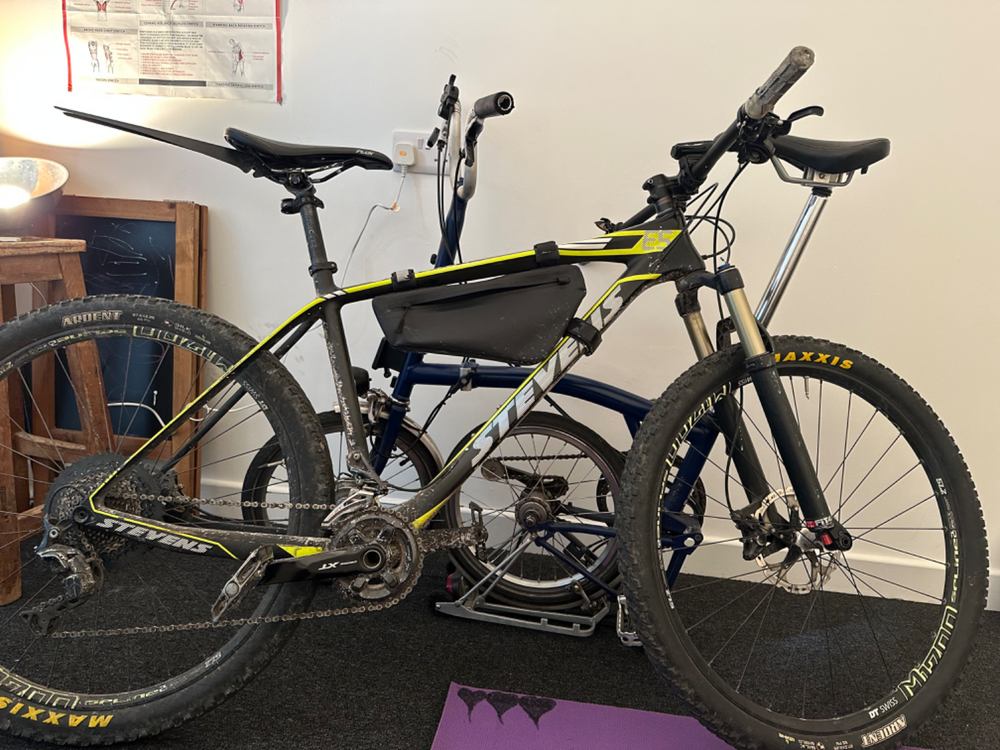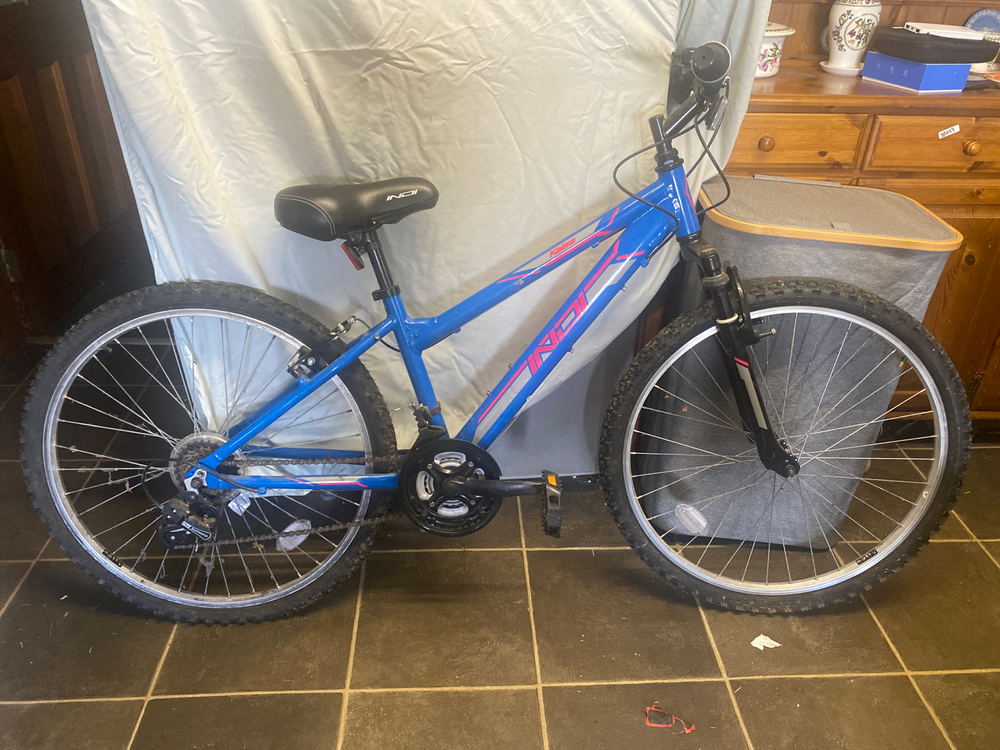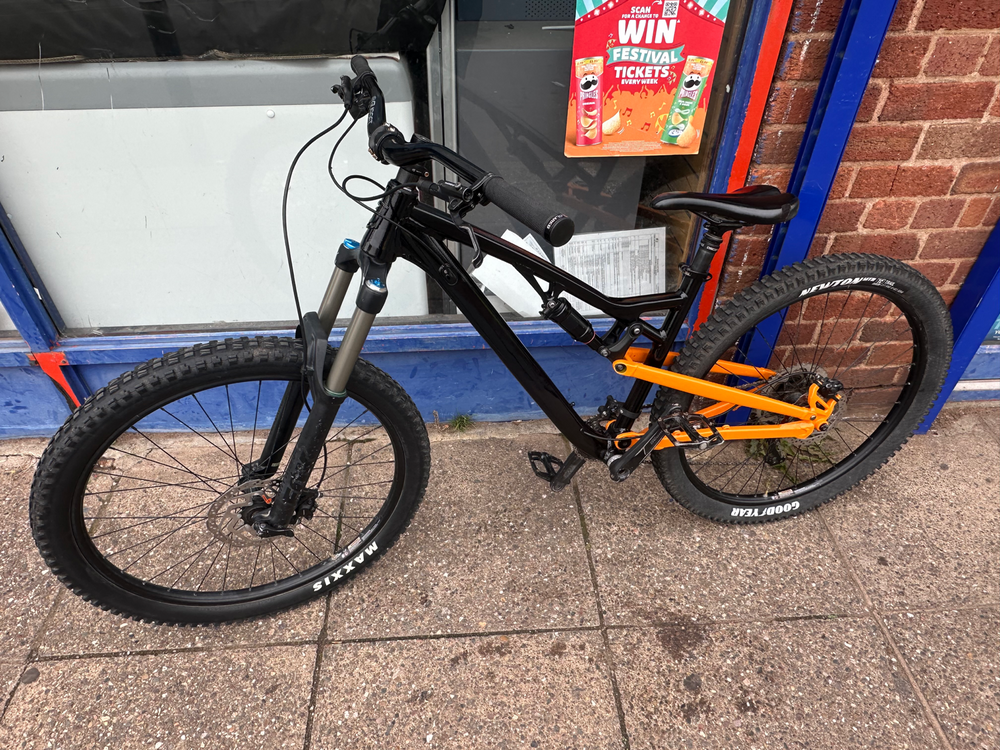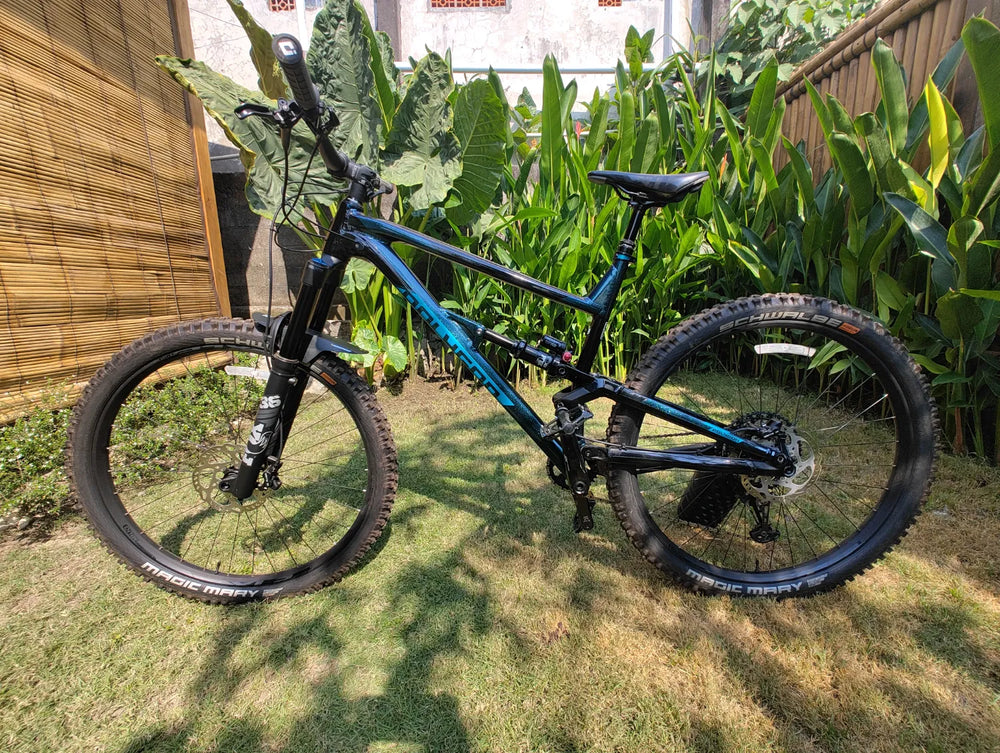Downhill Mountain Bikes
Want a bike for the most difficult black and diamond trails? Our range of used downhill mountain bikes includes models from Giant, Specialized and much more.
The bike for the slopes - Downhill mountain bikes
Downhill mountain bikes, often referred to as DH bikes, are specifically designed for riding downhill trails and downhill racing. These bikes are built to withstand the rigors of aggressive, high-speed descents on steep and rough terrain. Here are some key features and characteristics of downhill mountain bikes:
- Suspension: Downhill bikes have a dual-suspension design with a long-travel suspension system. They feature a large amount of suspension travel, typically ranging from 200mm to 220mm, to absorb impacts and provide maximum control and stability at high speeds.
- Frame Geometry: Downhill bikes have a distinct frame geometry that priorities stability and control. They typically have a slack head tube angle, a low bottom bracket height, and a long wheelbase. These features help improve stability and handling in steep descents.
- Frame Material: Downhill bike frames are commonly made of aluminium or carbon fibre. Aluminium frames offer strength and durability, while carbon fibre frames provide lighter weight and enhanced vibration damping. Carbon fiber frames are more commonly found in higher-end downhill bikes.
- Downhill-Specific Components: Downhill bikes come equipped with components specifically designed for the demands of downhill riding. These may include large disc brakes (often with 4-piston calipers) for enhanced stopping power, wide handlebars for better control, and strong wheels with high-quality hubs for durability.
- Wide Tires: Downhill bikes feature wide tires with aggressive tread patterns for maximum traction and control on loose and rough terrain. The tire widths typically range from 2.4 to 2.6 inches or even wider.
- Limited Gearing: Downhill bikes often have a limited number of gears since they are primarily used for descending rather than climbing. They commonly feature a single-chainring drivetrain with a wide-range cassette to provide sufficient gear ratios for pedaling on flatter sections or for accessing the top of downhill trails.
- Chain Retention Systems: To prevent the chain from derailing during rough descents, downhill bikes may include chain retention systems like chainguides or clutch-equipped rear derailleurs that minimise chain slap and improve chain retention.
- Downhill-Specific Fork: The front forks on downhill bikes are designed to handle the intense forces of downhill riding. They feature long-travel suspension (often matched with the rear travel), stiffer construction, and adjustable damping settings to provide maximum control and absorption of impacts.
- Protection: Downhill bikes often have additional frame protection in critical areas to withstand the abuse of downhill riding. This can include reinforced downtubes, chainstay protectors, and integrated bumpers.
- Weight: Downhill bikes tend to be heavier compared to other mountain bike disciplines due to the robust frame construction and components needed to handle the demands of downhill riding.
Downhill mountain bikes are purpose-built for riders who seek the thrill of high-speed descents on challenging and technical terrain. They excel in bike parks, downhill trails, and dedicated downhill racing. These bikes offer exceptional stability, suspension performance, and control, allowing riders to tackle steep descents and handle obstacles with confidence.
How do I find a suitable downhill bike for me?
Finding a suitable downhill mountain bike involves considering several factors that align with your specific needs, riding style, and budget. Here are some steps you can follow to find the right downhill mountain bike for you:
- Define Your Riding Style: Determine your riding style and the type of downhill trails you plan to ride. Consider the level of technicality, the steepness of descents, and the overall aggressiveness of your riding. This will help guide your selection process and the specific features you prioritize in a downhill bike.
- Suspension: Decide on the amount of suspension travel you need based on the type of downhill trails you'll be riding. Downhill bikes typically have a large amount of suspension travel, ranging from 200mm to 220mm, to handle big hits and provide maximum control and stability. More suspension travel can handle rougher terrain but may sacrifice pedaling efficiency.
- Frame Size and Geometry: Ensure that the downhill bike you choose comes in a frame size that fits you properly. Refer to the manufacturer's sizing chart or get a professional bike fit to determine the appropriate frame size. Consider the bike's geometry, including the head tube angle, reach, and stack height, to ensure it suits your riding preferences and body proportions.
- Frame Material: Consider the frame material based on your budget and desired ride characteristics. Aluminium frames offer strength and durability, making them a popular choice for downhill bikes. Carbon fibre frames provide lighter weight and enhanced vibration damping, but they are typically more expensive.
- Downhill-Specific Components: Pay attention to the components of the downhill bike, including the suspension, brakes, drivetrain, wheels, and tires. Downhill bikes require components specifically designed to handle the demands of aggressive riding. Look for robust suspension forks, strong disc brakes with 4-piston calipers, wide handlebars for control, and durable wheels and tires with aggressive tread patterns.
- Gearing: Downhill bikes often have a limited number of gears since they are primarily used for descending. Most downhill bikes feature a single-chainring drivetrain with a wide-range cassette to provide sufficient gear ratios for pedaling on flatter sections or accessing the top of downhill trails.
- Protection: Consider the frame protection and additional features designed to withstand the rigors of downhill riding. Look for models with reinforced downtubes, chainstay protectors, and integrated bumpers to protect the frame from impacts and damage.
- Budget: Determine your budget range for a downhill mountain bike and try to find options within that range. Downhill bikes can vary in price based on frame material, component quality, and brand. Consider your priorities and the features you need, and find a balance between your desired specifications and your budget limitations.
- Research and Reviews: Read reviews, watch videos, and seek opinions from other downhill riders to gather more information about specific downhill bike models you're considering. Look for reviews that highlight performance, durability, reliability, and customer satisfaction.
- Reach out to us! If you're still uncertain or need expert guidance, contact one of our ride guides.





